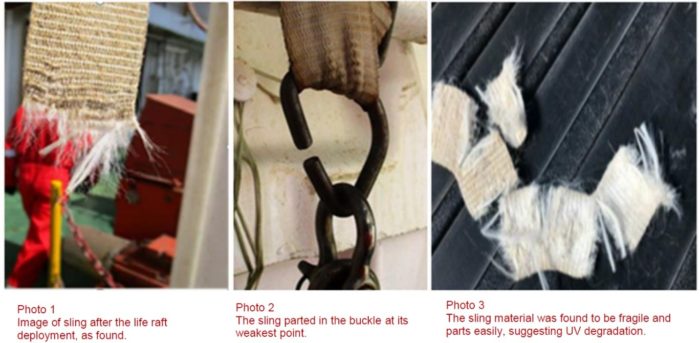In the latest edition of its Safety Flashes, IMCA analyzes an unplanned deployment of a life raft from the starboard forward life raft station into the sea. Investigation revealed that the hold back strap, used to retain the life raft in place, was degraded to the point of failure.
The incident
The incident occurred in early afternoon with calm seas and clear skies.
The life raft remained attached to the painter line and vessel.
The vessel was later able to safely recover the life raft to deck.
What went wrong?
There was a failure of the securing straps designed to hold the life raft in place. This allowed one life raft to deploy into the sea.
The securing straps had only been installed one-year prior to failure.
The vessel was in operation in the Middle East, with high temperatures and high UV levels.
Probable causes
The hold back strap, used to retain the life raft in place, was found to be degraded to the point of failure.
This appears to have been caused due to the extremes of temperature and ultraviolet light.
Recommendations
Inspection routines for life rafts and associated lashings should consider the environmental conditions, and all parts of the equipment should be visually inspected and maintained at appropriate intervals.
Assumptions should not be based on vessel operating areas; UV damage may occur within any region.
- Conduct immediate inspections of life raft securing straps and associated equipment;
- Replace any items which are of concern or appear to be faulty;
- Verify manufacturer’s instructions with regards to the service life of the securing straps;
- Any temporary secondary securing arrangements should not affect the ability to launch any life raft – as per SOLAS requirements.
See also:






























































